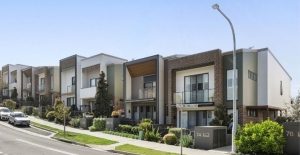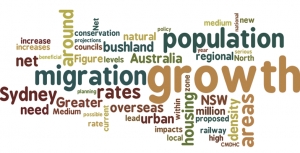Displaying items by tag: planning
Recent submissions: planning and Westleigh Park
The Upper House of the NSW parliament has been conducting an inquiry into how the planning system can be improved so that people, threatened species and the built environment are protected from the impact of climate change. Sue Higginson from The Greens is chairing the inquiry. The terms of reference were broad and provided an opportunity for individuals, local councils and community groups to comment using local examples of the long list of inadequacies of the system and the resulting environmental destruction. They make interesting reading!
The development application for Westleigh Park was open for submissions until 20 November. STEP’s criticisms of this large project have not been addressed so our submission drew largely from previous ones. Most of the more detailed ecological reports have many inadequacies so we consider that the development application should not be submitted to the Planning Panel until the missing details are covered. The basic problems that we have written about many times remain, namely the mountain bike trails, the use of synthetic turf and the serious and irreversible impacts on Sydney Turpentine Ironbark Forest.
NSW Planning Minister trashes plans to improve liveability
The NSW and Australian governments still want a rapid increase in population This will place great pressure on new outer suburbs and areas near public transport that have been earmarked to accommodate the demand for new housing.
There was optimism that a directive issued by former Planning Minister, Rob Stokes of planning principles would have made new suburbs more pleasant places to live. They might have had more parks and street trees that would reduce the ambient heat and buildings designed with sustainability principles. They would help NSW meet the ambition of net zero by 2050 considering that buildings account for 25% of emissions.
The principles also provided that resilience and risk management from climate change be key considerations so that development in floodplains or close to bushland would be controlled. These principles would be applied throughout all NSW cities and towns. Recent events have demonstrated their importance.
The details for the implementation of the principles are set out in a draft Design and Place State Environment Planning Policy (SEPP). It has been developed by the Department of Planning in collaboration with architects, planning experts and researchers.
In a shock announcement, the new NSW Planning Minister, Anthony Roberts, has decided to bow to the developer lobby and revoke the principles and the Design and Place SEPP. What happens now is unclear.
Increase in density
The draft policy was not all good. It included an Urban Design Guide that established objectives for quality urban spaces. It was intended to advise applicants and their design teams, who prepare development proposals, on expectations and to assist in assessment of proposals (by local or state government).
There is a sting in the tail of the list of objectives. They include a blanket increase in density to 30 dwellings per hectare in areas within 5 min walk to local shops or near to public transport and 15 dwellings per hectare everywhere else. The latter equates to 666 m2 average area per dwelling including space for roads, parking, parks etc. Implementation can occur by mixing apartment buildings into low density areas.
The reasoning stated in the guide is the creation of more vibrant urban areas. That seems highly unlikely. Current LEPs would be ignored. Character and heritage would be lost in the process if the developments that have sprung up all over Sydney are anything to go by.
Push for spot rezonings
In another backward move the government has issued a discussion paper about a proposal to allow developers to request spot rezonings. Councils would have a limited time to assess these applications.
The authority of councils and community wishes determined by strategic plans would be overtaken by developers making these requests. This goes against the objective that ensures strategic planning is the foundation for all decisions about potential land-use changes. The pressure to assess applications within a fixed time frame will compromise the ability of councils to assess how a proposal fits into the area’s strategic framework and take into account other developments in the process of construction or under assessment.
The planning system is more flawed than ever. More details of these changes are described in FOKE’s March 2022 newsletter.
Greater Sydney Strategy
It's important that as many people as possible comment on the Greater Sydney Strategy and the North District Plan by 31 March 2017.
Towards Our Greater Sydney 2056 is a 40 year vision that spells out the anticipated rate of growth and framework for employment and population distribution. How this is done will ultimately determine the long-term impacts on our natural areas, STEP’s chief focus.
For a city the size of Sydney, strategic planning over a 40 year period is important. However as outlined below there are matters of serious concern.
High Rate of Growth
On p8 there is this statement:
Greater Sydney is experiencing a step change in its growth with natural increases (that is an increase in the number of births) a major contributor. We need to recognise that the current and significant levels of growth, and the forecast higher rates of growth are the new norm rather than a one-off peak or boom.
Given the clear impacts of high growth rates on our urban amenity this statement needs closer scrutiny.
Refer to the table below for the projected growth rates and the figure below for the net overseas migration component.
| Region | Population 2011 | Projected population | ||
| 2036 | Change 2011–36 | % change 2011–36 | ||
| Greater Sydney | 4,286,350 | 6,421,950 | 2,135,650 | 49.8% |
| Rest of NSW | 2,932,200 | 3,503,600 | 571,400 | 19.5% |

From the figures the total projected increase in population in NSW from 2011–36 is around 2.7 million. Of this, for the same period, the total from net overseas migration is around 1.7 million, leaving the natural growth at around 1 million.
A recent report by the Planning Institute of Australia on population trends, Through the Lens: Megatrends Shaping our Future (p12) concluded:
Overseas migration continues to be the biggest contributor to population growth.
Net overseas migration for Australia since 1976 is shown in the lower figure. On p12 it says that:
Of the three basic factors determining population growth (fertility/births, mortality/deaths and migration) the net migration rate is most subject to policy intervention, and thus the most uncertain in future projections.
 Since the net migration rate is the primary determinant of Australia’s population growth and is controlled by government policy, it is clearly possible to regulate the overall population growth rates of Australia to ensure they are at acceptable levels and anticipated benefits are broadly realised.
Since the net migration rate is the primary determinant of Australia’s population growth and is controlled by government policy, it is clearly possible to regulate the overall population growth rates of Australia to ensure they are at acceptable levels and anticipated benefits are broadly realised.
The regulation of inflation by the Reserve Bank has proved beneficial relative to an unregulated economy. Regulation of Australia’s overall population level and age structure through adjustment of net migration targets by a Federal government agency could prove beneficial to planning within Australia. This agency has to work in concert with state governments that bear the brunt of the implementation consequences.
High growth rates are resource intensive, difficult to manage and can lead to significant long-term environmental impacts. In the past these have included a higher proportion of defective buildings, lags in required new infrastructure with traffic congestion increasing and damage to bushland and watercourses from greater urban stormwater run-off.
The current proposed annual growth rates of around 1.6% are too high and need to be reduced to the more manageable levels in the previous three decades of around 1%. The Mercer World’s Most Liveable Cities ranking indicates that beyond a population of around 6 million liveability declines. Sydney has to recognise that growth cannot be infinite and ultimately must plan for a zero net growth future.
The Greater Sydney Commission may not have a say in the growth projections but we think people should be able to express their views through the current consultations process and local federal and state MPs.
Urban Renewal
On p8 it states that the shorter term need for additional new housing capacity is greatest in the North and Central Districts. While this will lead to more high-rise development along the railway line it is important that urban conservation corridors are retained.
For example it is possible to walk from Gordon, Killara and Roseville Stations through high quality urban conservation areas to the bushland that leads to Garigal National Park. The value of these conservation corridor links from railway stations to our national parks can only increase with time.
Medium Density Infill Development
On p9 it states:
Many parts of suburban Greater Sydney that are not within walking distance of regional transport (rail, light rail and regional bus routes) contain older housing stock. These areas present local opportunities to renew older housing with medium density housing. Medium density housing is ideally located in transition areas between urban renewal precincts and existing suburbs, particularly around local centres and within the 1 to 5 km catchment of regional transport.
A 1 to 5 km catchment from the railway stations and regional bus routes would include virtually all of the North Shore. Future medium density in these areas is likely to be fast-tracked by developers using the NSW government’s proposed Complying Medium Density Housing Code (CMDHC).
Provided prescribed standards are met this could allow building density increases by as much as a factor of two without the need for consent. Because of its indiscriminate nature, for those areas impacted by the code, it could lead to increases in dwelling numbers significantly in excess of those planned for.
The CMDHC is proposed in extensive single dwelling R2 zones for those councils where multi-dwelling housing or dual occupancy is permissible in this zone. If one council allows multiple dwellings it will flow through to all the original member councils when they amalgamate.
Examination of the relevant LEPs indicates all the amalgamated councils in the North District will be impacted with the exception of Hornsby–Ku-ring-gai. STEP strongly opposes application of CDMH in any residential zone other than the medium density R3 zone.
Economic Priorities
On p7 there is a focus on the economic growth from inbound tourism. This would be a serious concern if our bushland and national parks are treated as assets for commercialisation. Sensitive natural bushland areas can easily be damaged from overuse and need protection. Private leasehold of areas with existing bushland and clearance for accommodation should not be supported.
A Greater Sydney Commission?
Last year the NSW Government’s planning legislation was rejected because communities were going to be left out of significant parts of the decision making process. This last week the government announced the structure of the Greater Sydney Commission that could be just as bad.



